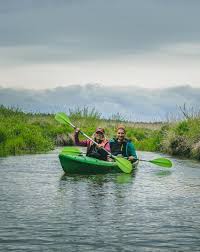Weather and canoeing

The ability to predict the weather is essential for a canoeing tourist. Because bad weather can become a cause of postponement, and even resignation from the canoe trip, or changes to the entire program.
Admittedly, many tourists use weather reports, but these messages cover a larger area of land and therefore it is difficult to determine the weather for a given place. Especially, that several types of weather can occur simultaneously in a geographic area, it is therefore necessary to constantly observe the signs of weather. We take every meteorological factor and every atmospheric phenomenon as a sign of weather, observed at the site, which may change the weather at the place of observation.
One of the local signs of weather is:
- qualitative cloud cover (type of clouds);
- type, the intensity and nature of the ground wind;
- visibility of indicative items;
- some light phenomena, like for example. halo and wreaths.
Heralds of good weather are:
- cumulus clouds, called mounds of hay, small in size, fading in the evening;
- weak winds, local, fading in the evening;
— Obfita, cool evening dew;
- sapphire sky, sunset in pink and gold; a greenish aurora forecasts good weather for a long time;
- cool evening, night and morning after a hot day;
- mists and vapors appearing in the evening over the waters and meadows, and dying in the morning;
- straight up smoke rising;
- swallows flying high;
- pale glowing stars.
They herald bad weather:
- cirrus clouds causing the 'halo' phenomenon”, i.e.. wreath around the sun and moon. Depending on the rate at which the clouds dissipate, it can be determined, how quickly the weather will change. If the clouds dissipate quickly, the rain will also come quickly (in 10-12 hours). If slowly, it will rain in 1-3 days;
- sunset behind clouds;
- red or purple evening aurora;
- cloudy and whitish sky.
One of the most important conditions for accurately predicting local weather based on local signs, is careful and careful observation of the present weather and any changes in it. Occasional observation will not bring the expected results.